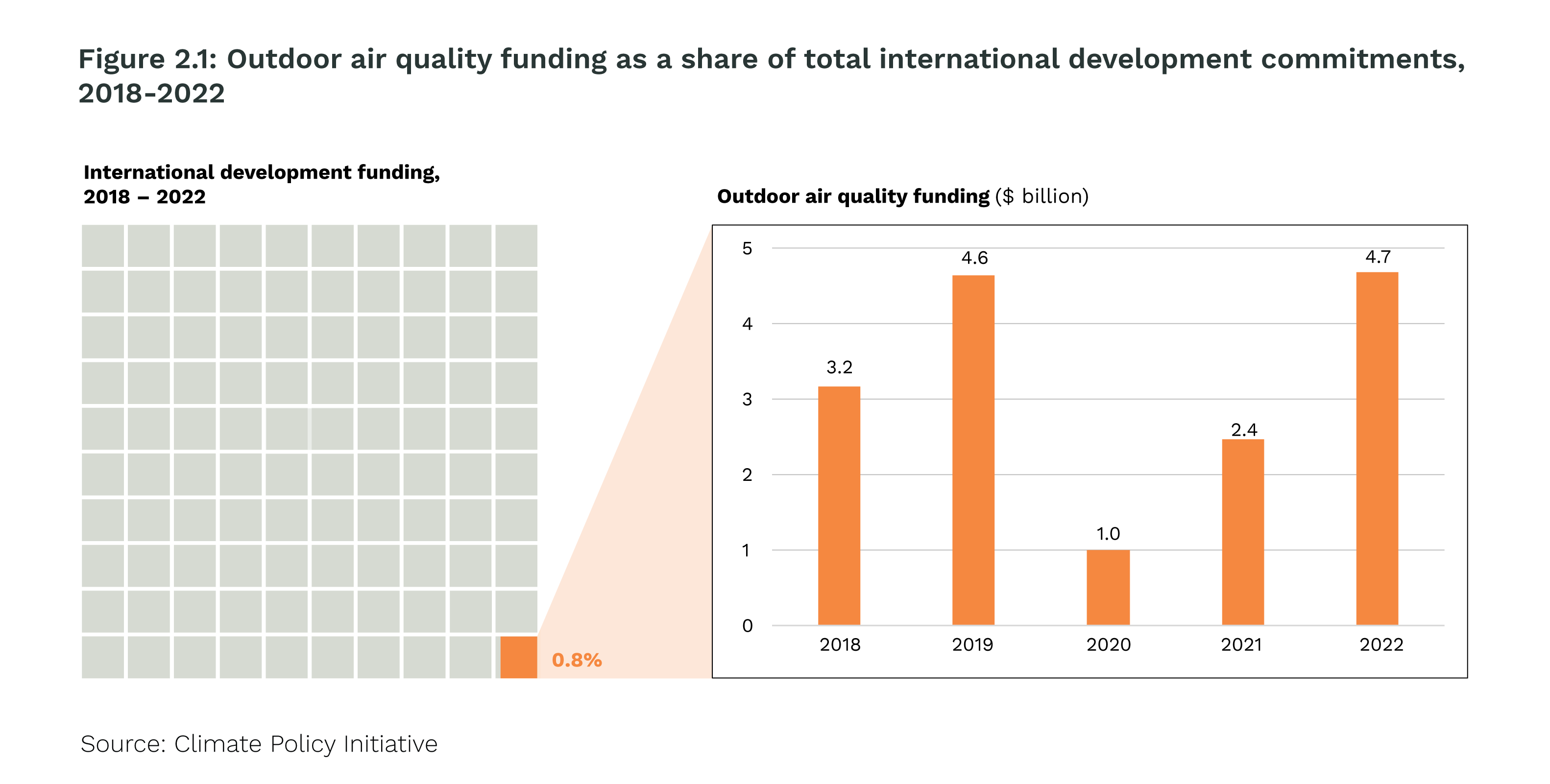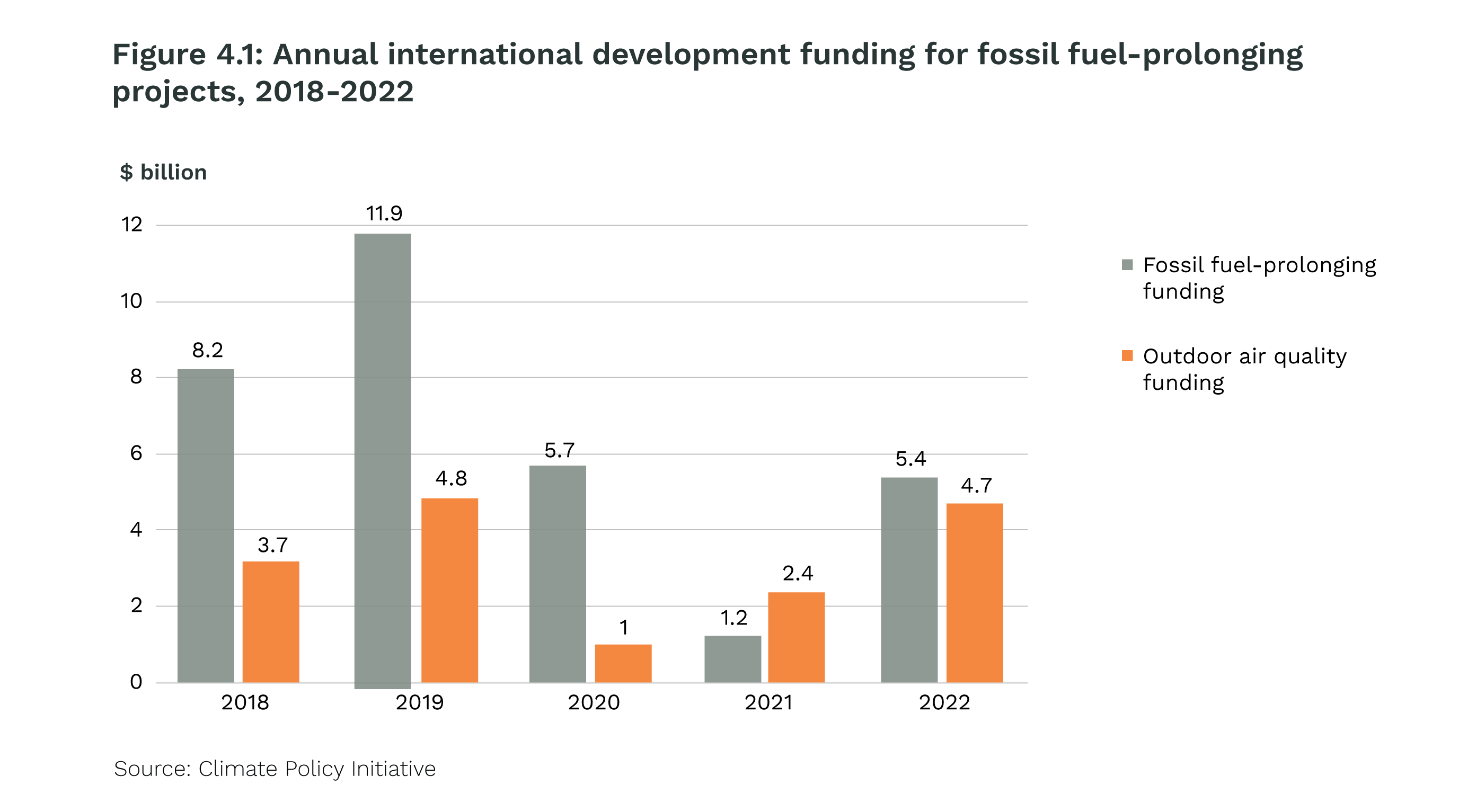Despite overwhelming evidence of the harm it inflicts, air pollution is still treated as the poor cousin of other development areas within health and climate.
Toxic air is one of the leading causes of premature deaths worldwide, with a death toll of more than 8 million people each year. It also has crippling economic consequences. From loss of productivity and diminished crop yields to the health costs of treating conditions such as cancer and dementia, the cost of inaction runs into the trillions. The World Bank has estimated that these costs − a ‘dirty air tax’ of sorts − amount to around 6.1% of annual global GDP. Increasingly, air pollution is recognized as a delayer of development and driver of inequalities within and between countries.
The State of Global Air Quality Funding series, produced in partnership with the Clean Air Fund, analyzes international development funding flows to outdoor air quality-related projects for the five years up to and including 2022 and is based on the latest publicly available data. The donors covered in this analysis include bilateral and multilateral Development Finance Institutions (DFIs) and governments that provide international funding.
Levels of air pollution are escalating in most low- and middle-income countries, but international development funding for clean air efforts reached $4.7 billion in 2022. Investments have crept back to pre-pandemic levels ($4.6 billion in 2019), but clean air funding still only makes up 1% of all international development funding. Along with this chronic underfunding, our analysis shows that investments are uneven and not sufficiently targeted or tailored. As a result, opportunities to realize clean air dividends are being missed.
Key findings
- Compared with other international development funding, overall air quality finance is unusually skewed towards loans rather than grants: 92% of air quality funding is provided in the form of loans, creating costs for recipient countries and hindering uptake of this vital assistance. This comes in sharp contrast to the 63% share of grant funding seen for total Official Development Assistance in 2022.
- There are wide ‘funding deserts’ because funding is spread unevenly across regions. For example, outdoor air quality funding for every country in Africa and the Middle East was only a third of the funding channelled to one Asian country, the Philippines ($1.5 billion versus $4.7 billion from 2018–2022).
- Perversely, funding for fossil-fuel prolonging projects increased by 350% from $1.2 billion in 2021 to $5.4 billion in 2022, reversing the promising downward trend reported last year.
- Low-income countries such as Chad and Somalia receive much less funding than upper middle-income countries such as Serbia and Costa Rica: $2 versus $73 of overall air quality funding per person from 2018 to 2022.
- Although the air pollution and climate crises share many of the same causes and solutions, less than 3% of international public climate finance explicitly targeted air quality improvements from 2018 to 2022.
- Projects focused on tackling black carbon (or soot) received only 0.1% of donors’ outdoor air quality funding ($18 million out of $16 billion from 2018 to 2022), despite the unique and powerful role this pollutant plays in planetary and human health.
- Our analysis shows that bilateral development agencies need to play a bigger role, bringing their expertise, and maximizing many of their existing focuses on health funding, in order to balance the over-reliance on loan financing for outdoor air quality projects.
Recommendations for funders
The report calls on bilateral and multilateral funders to increase the volume of outdoor air quality funding, to support states to realize the benefits from reduced air pollution, to improve the geographical balance of their portfolios and to tackle black carbon.
Specifically, international development funders are encouraged to: expand their grant funding; integrate air quality considerations across all thematic portfolios and funding decisions, especially for investments in climate and health; develop and enhance monitoring and tracking systems that fully account for air quality; and stop funding projects that prolong the use of fossil fuels.



